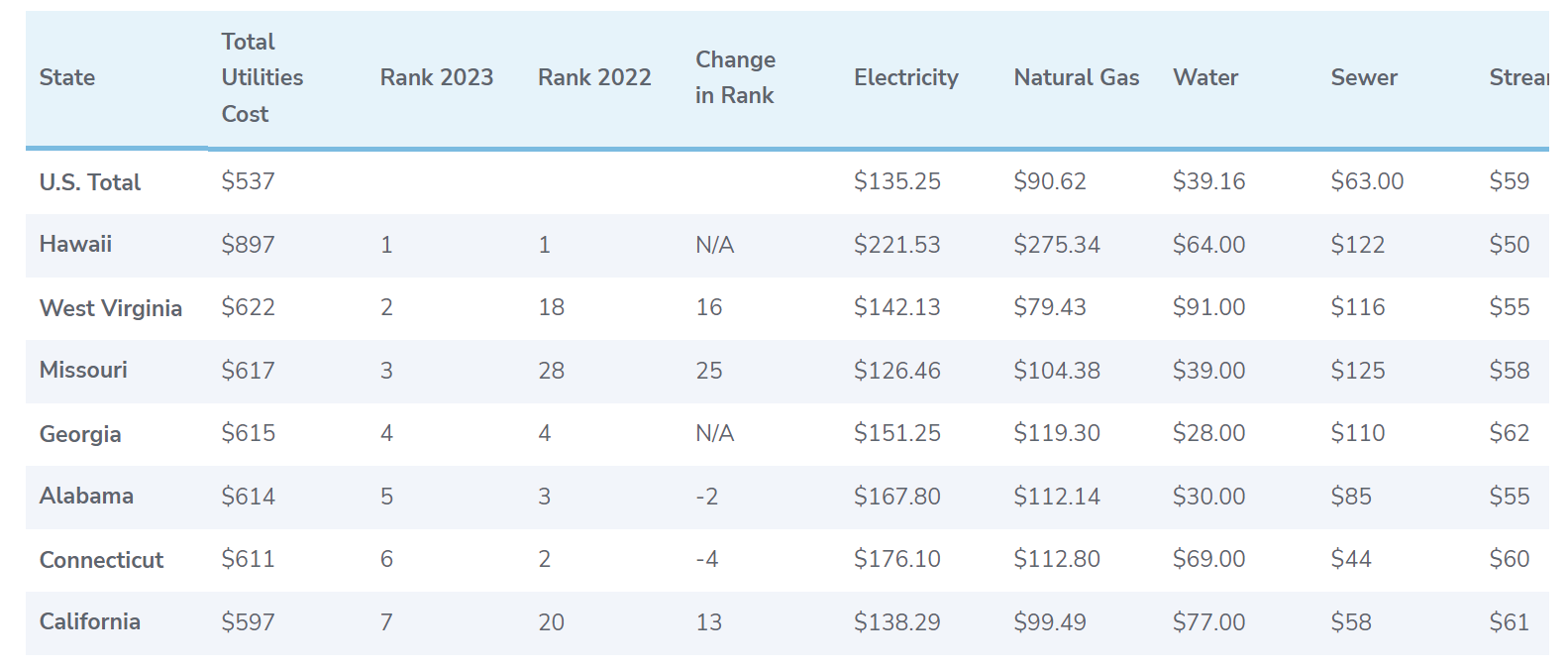Los Angeles, with its sunny climate, bustling entertainment industry, and diverse cultural scene, remains one of the most desirable cities to live in the United States. However, the allure of LA comes with a high cost of living.
As we move into 2024, understanding the financial requirements of residing in this vibrant city is crucial for prospective residents.
Housing Costs
Housing is the most significant expense for most people living in Los Angeles. As of 2024, the average monthly rent for an apartment in Los Angeles is approximately $2,700. This figure varies depending on the type and location of the accommodation. For instance:
- A one-bedroom apartment in the city center costs around $2,100 per month.
- A similar apartment outside the city center averages about $1,900 per month.
- The median rent for two-bedroom homes in Los Angeles is around $2,300.
Median Home Prices
For those looking to buy a home, the median price in Los Angeles is around $945,000. This price reflects the high demand and competitive real estate market in the city.
Utilities: Electricity, Water, Heating, and Internet
The average monthly cost for utilities, including electricity, gas, water, and heating, as well as the internet, is around $400-500.

Food and Groceries
The cost of groceries in Los Angeles can vary widely depending on individual preferences and dietary needs. On average, a single person in Los Angeles may spend around $300 per month on groceries, but more likely between $400-500. This estimate includes a variety of food items necessary for a balanced diet.
Price of Common Food Items
Here are the prices for some common grocery items in Los Angeles:

These prices reflect the higher cost of living in Los Angeles compared to national averages. While grocery prices in Los Angeles are relatively high, they are a necessary part of the overall cost of living.
The impact of these expenses can be significant, especially for larger families or those with specific dietary needs. However, the lack of sales tax on groceries like eggs, milk, chicken, and cheese helps mitigate some of these costs.
Transportation
The city’s extensive public transportation system includes buses, light rail, and subways. The cost of a monthly public transit pass is approximately $72. For those who drive, the price of gasoline averages around $5-6 per gallon.
Car maintenance and insurance are additional costs to consider. On average, getting your tires balanced costs about $60.
Car insurance in Los Angeles can vary greatly depending on factors such as driving history and the type of vehicle. On average, drivers can expect to pay between $1,500 and $2,000 annually for car insurance.

Consider all these factors if you are planning to move there or just to visit and do the perfect LA itinerary.
Healthcare
The average monthly cost of employer-sponsored health insurance is about $100, while non-employer-sponsored plans average around $215 per month.
Comparison of Employer-Sponsored vs. Non-Employer-Sponsored Plans
Employer-sponsored health insurance plans tend to be more affordable due to employer contributions. Non-employer-sponsored plans, while often more expensive, provide options for those who are self-employed or do not receive health insurance through their job.
Overall, the high cost of healthcare in Los Angeles is a critical factor to consider when evaluating the cost of living in this city.
Entertainment and Leisure
Living in Los Angeles offers a wide array of entertainment and dining options. However, these activities come at a cost.
Dining out at a mid-range restaurant typically costs around $50 for a meal. Movie tickets average about $16 each. Other recreational activities, such as attending a fitness class, can cost approximately $19 per session.
These expenses can add up quickly, particularly for those who frequently dine out or enjoy the city’s various entertainment options.
Popular Free or Low-Cost Activities in LA
Despite the high costs associated with some activities, Los Angeles also offers numerous free or low-cost options.
Popular free activities include hiking in Griffith Park, exploring the Getty Center, and relaxing on the city’s many beaches.

Farmers’ markets, free outdoor concerts, and art walks provide additional affordable entertainment options that allow residents to enjoy the city’s vibrant culture without breaking the bank.
Income and Employment
The median household income in Los Angeles is approximately $69,778. This figure is important to consider when evaluating the affordability of living in the city, as it provides a benchmark for comparing living expenses to income levels.
When comparing the median household income to the cost of living in Los Angeles, it becomes clear that budgeting is crucial. With high housing costs, significant utility expenses, and the additional costs of food, transportation, healthcare, and entertainment, residents need to manage their finances carefully to maintain a comfortable lifestyle.
Takeaway
Living in Los Angeles in 2024 comes with a high cost of living, driven by expensive housing, utilities, and daily expenses.
While the median household income is relatively high, careful budgeting is essential to manage the various costs associated with living in this vibrant city.
For those considering a move to Los Angeles, it’s important to weigh these expenses against potential income and explore both free and low-cost activities to enjoy all that the city has to offer.










